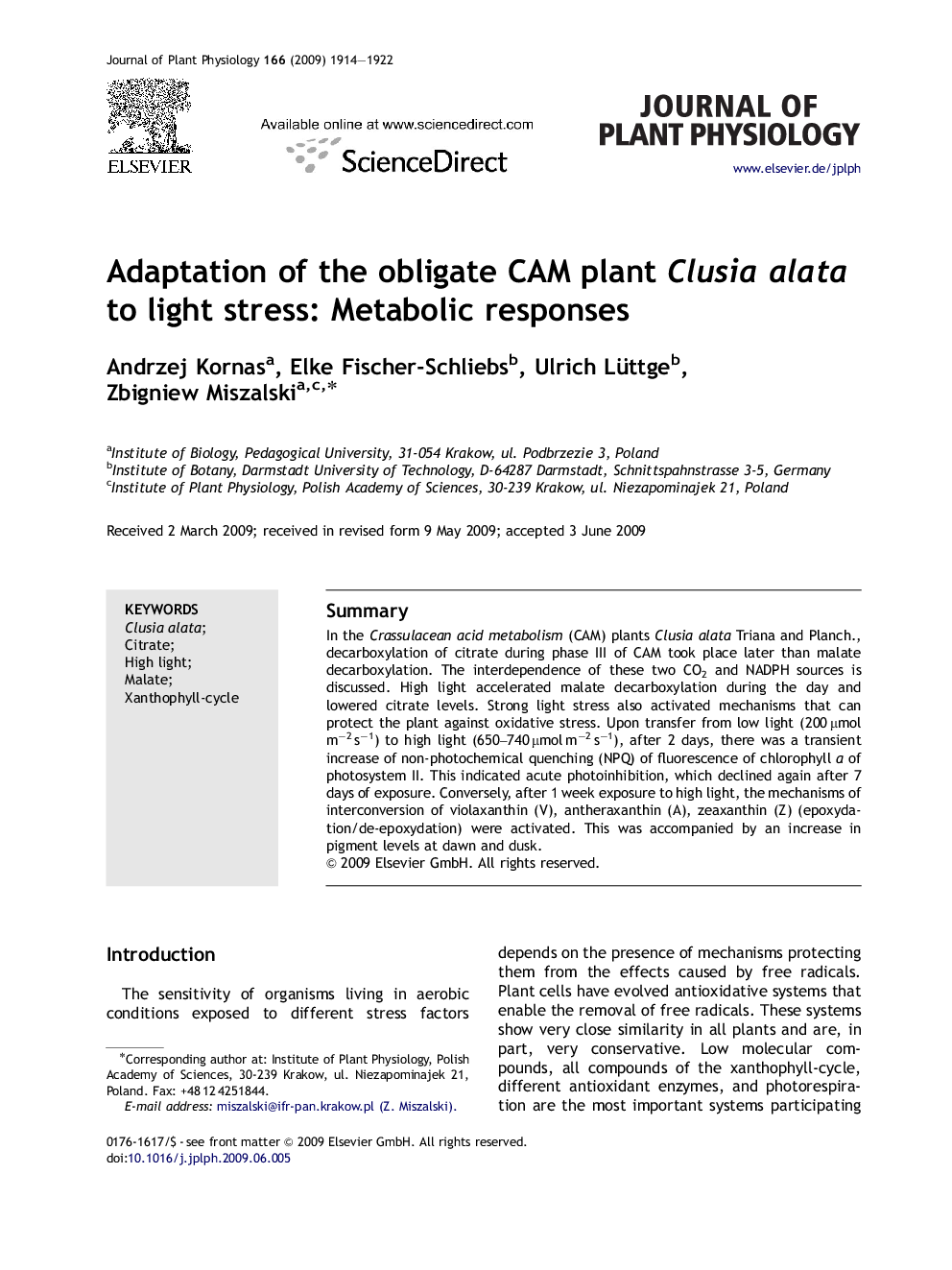| Article ID | Journal | Published Year | Pages | File Type |
|---|---|---|---|---|
| 2056960 | Journal of Plant Physiology | 2009 | 9 Pages |
SummaryIn the Crassulacean acid metabolism (CAM) plants Clusia alata Triana and Planch., decarboxylation of citrate during phase III of CAM took place later than malate decarboxylation. The interdependence of these two CO2 and NADPH sources is discussed. High light accelerated malate decarboxylation during the day and lowered citrate levels. Strong light stress also activated mechanisms that can protect the plant against oxidative stress. Upon transfer from low light (200 μmol m−2 s−1) to high light (650–740 μmol m−2 s−1), after 2 days, there was a transient increase of non-photochemical quenching (NPQ) of fluorescence of chlorophyll a of photosystem II. This indicated acute photoinhibition, which declined again after 7 days of exposure. Conversely, after 1 week exposure to high light, the mechanisms of interconversion of violaxanthin (V), antheraxanthin (A), zeaxanthin (Z) (epoxydation/de-epoxydation) were activated. This was accompanied by an increase in pigment levels at dawn and dusk.
